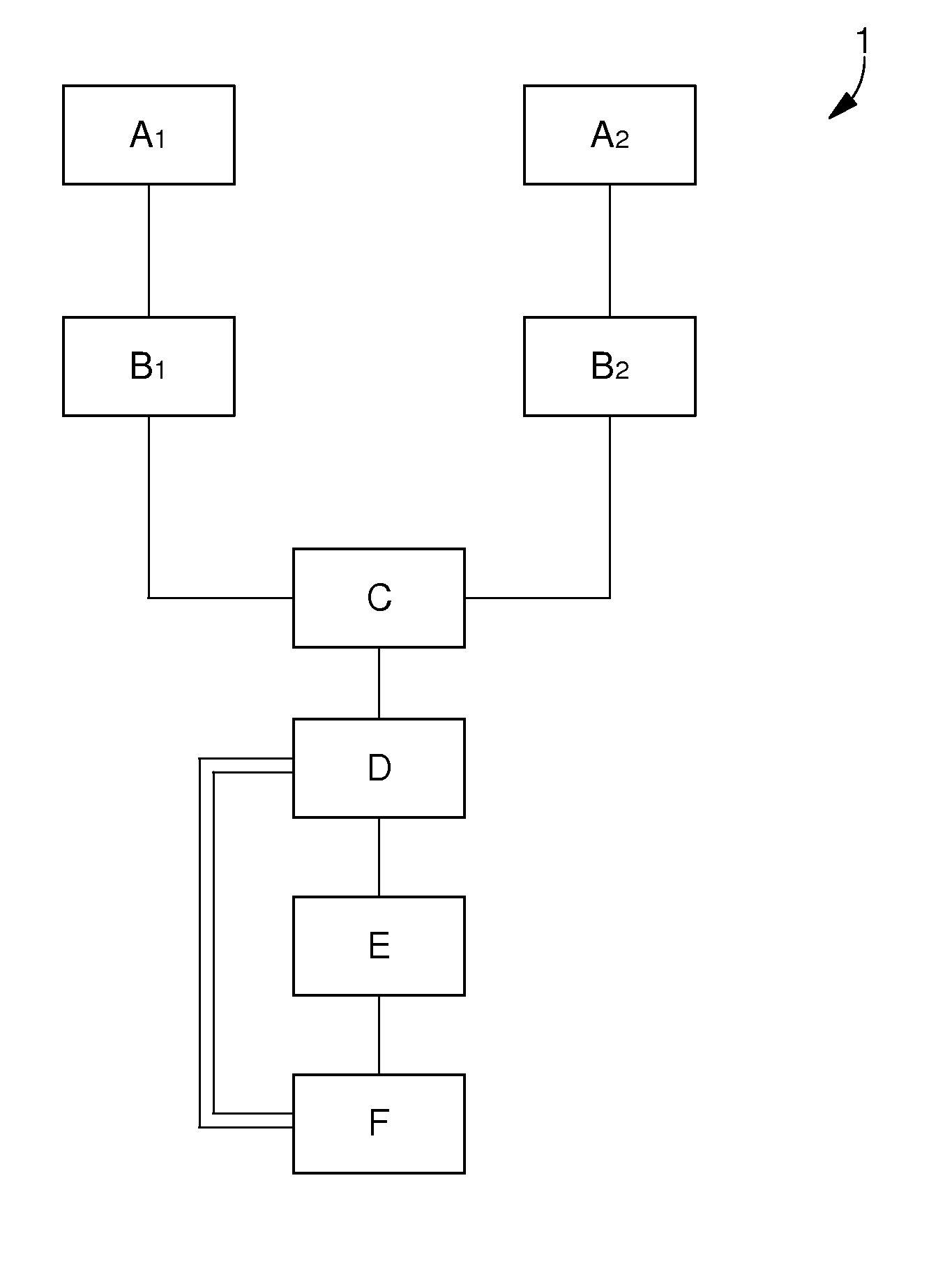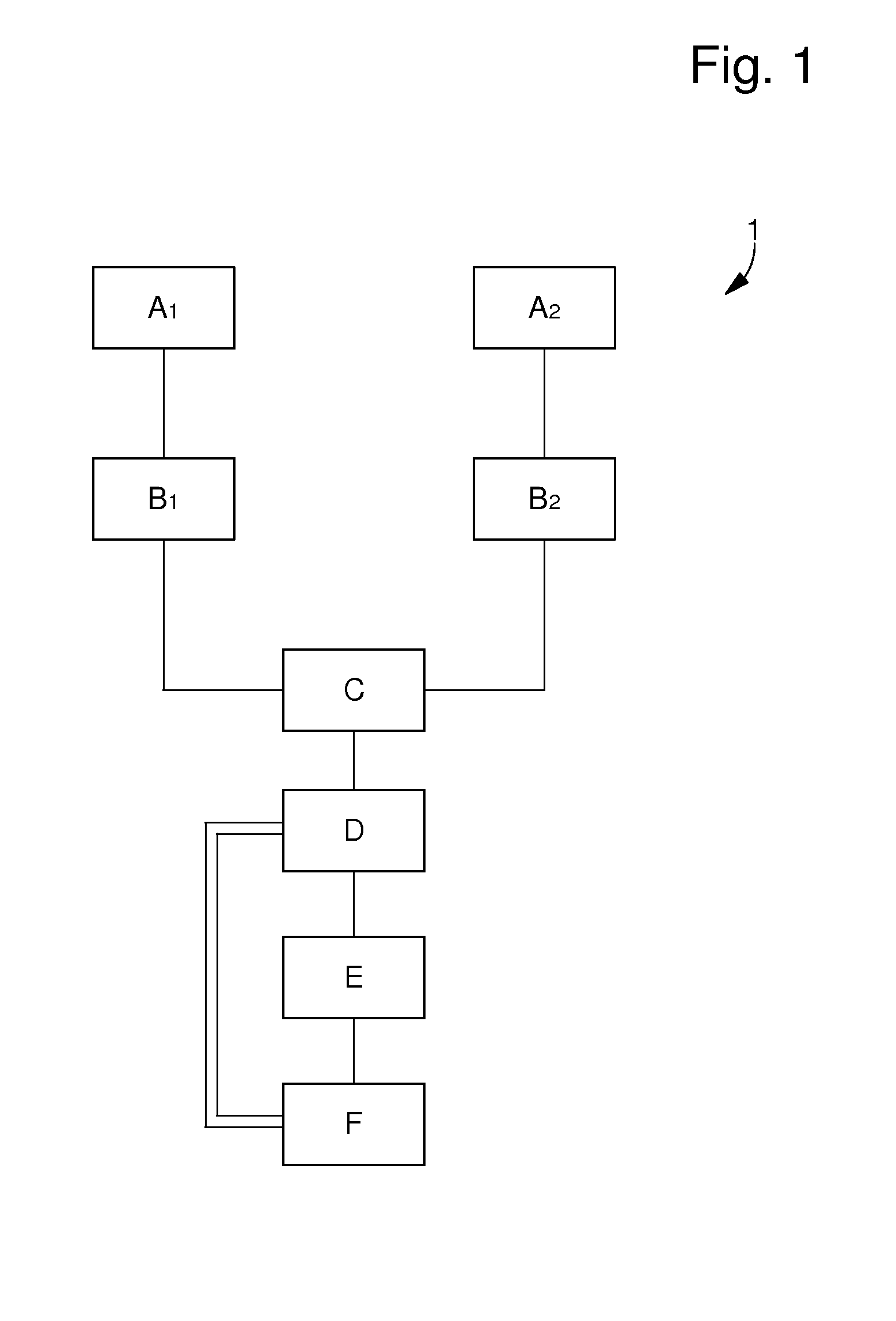Method of manufacturing a watch plate
a manufacturing method and technology of a watch plate, applied in the field of manufacturing a watch plate, can solve the problems of high manufacturing cost, high manufacturing cost, and extremely complex geometry of the watch plate, and achieve the effects of saving time and money, high mechanical performance, and high mechanical performan
- Summary
- Abstract
- Description
- Claims
- Application Information
AI Technical Summary
Benefits of technology
Problems solved by technology
Method used
Image
Examples
first embodiment
[0021]A first embodiment consists in using hot shaping via a press.
[0022]The first step A1 consists first of all in making the dies for the plate. The dies each have an inner face including the negative pattern cavity of the plate to be manufactured. The dies are provided with means for evacuating any surplus material. Of course, since manufacture of these dies does not form part of the subject of the present invention, any possible methods for making the dies may be envisaged.
[0023]Secondly, this first step A1 consists in taking the material in which the plate will be made. According to the present invention, the material used is an at least partially amorphous material. Preferably, a totally amorphous material will be used. Said material may or may not then be a precious metal. Of course, the metal could also be an alloy.
[0024]The use of amorphous material advantageously allows the dimensions to be reduced. Amorphous materials have deformation and elastic limit characteristics tha...
second embodiment
[0030] the plate is made by casting, such as, for example, pouring a liquid metal into a mould. To achieve this, step A2 consists first of all in making the mould for the plate by any possible method.
[0031]Secondly, this first step consists in taking the material in which the plate will be made. In this second embodiment, it is not essential to use an amorphous material. In fact, it does not matter whether the material is crystalline or already amorphous since the casting principle requires the material to be placed in liquid form, i.e. at a higher temperature than Tx. It is not, therefore, necessary to have a particular crystalline structure beforehand, since placing the material in a liquid state will unstructure said material.
[0032]However, since the melting temperature of amorphous metals is lower than that of crystalline metals, the method is thus easier to implement. The casting could also be by injection, allowing the liquid material to better match the shapes of the mould.
[0...
PUM
| Property | Measurement | Unit |
|---|---|---|
| temperatures | aaaaa | aaaaa |
| solidification shrinkage | aaaaa | aaaaa |
| solidification shrinkage | aaaaa | aaaaa |
Abstract
Description
Claims
Application Information
 Login to View More
Login to View More - R&D
- Intellectual Property
- Life Sciences
- Materials
- Tech Scout
- Unparalleled Data Quality
- Higher Quality Content
- 60% Fewer Hallucinations
Browse by: Latest US Patents, China's latest patents, Technical Efficacy Thesaurus, Application Domain, Technology Topic, Popular Technical Reports.
© 2025 PatSnap. All rights reserved.Legal|Privacy policy|Modern Slavery Act Transparency Statement|Sitemap|About US| Contact US: help@patsnap.com


